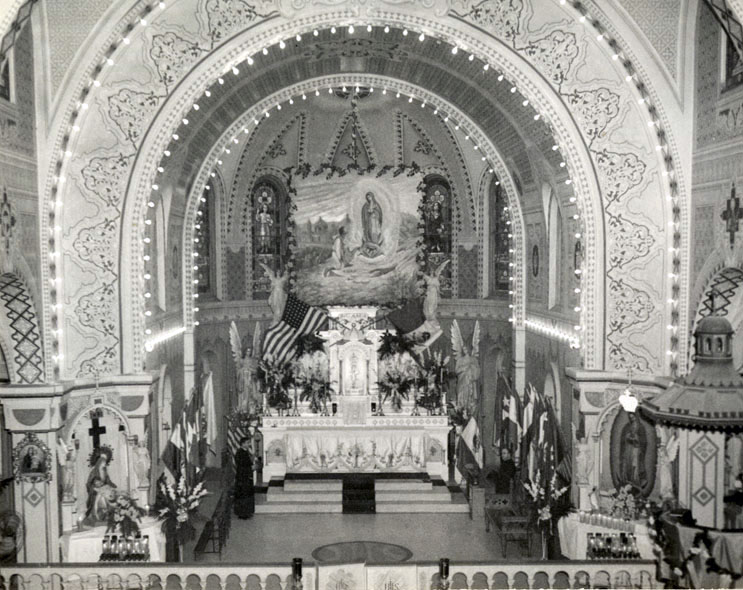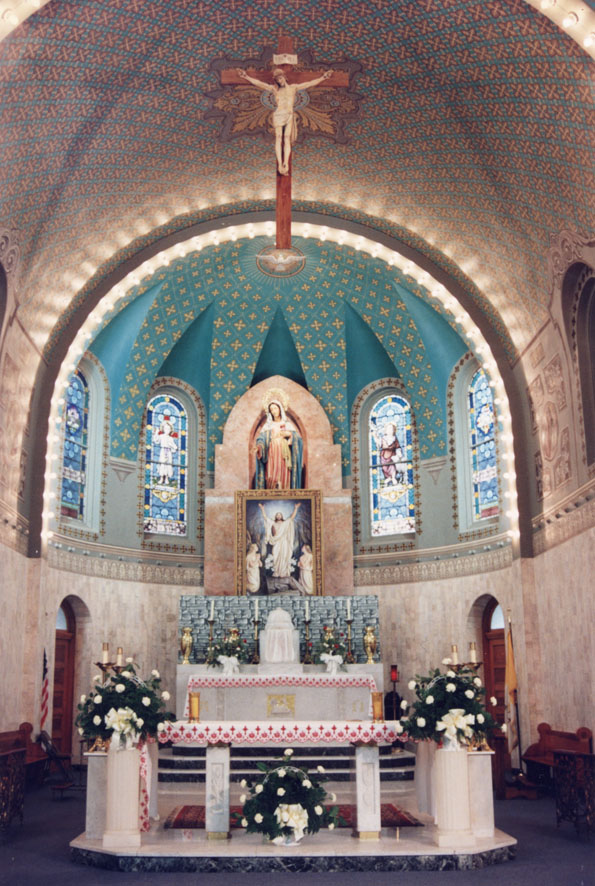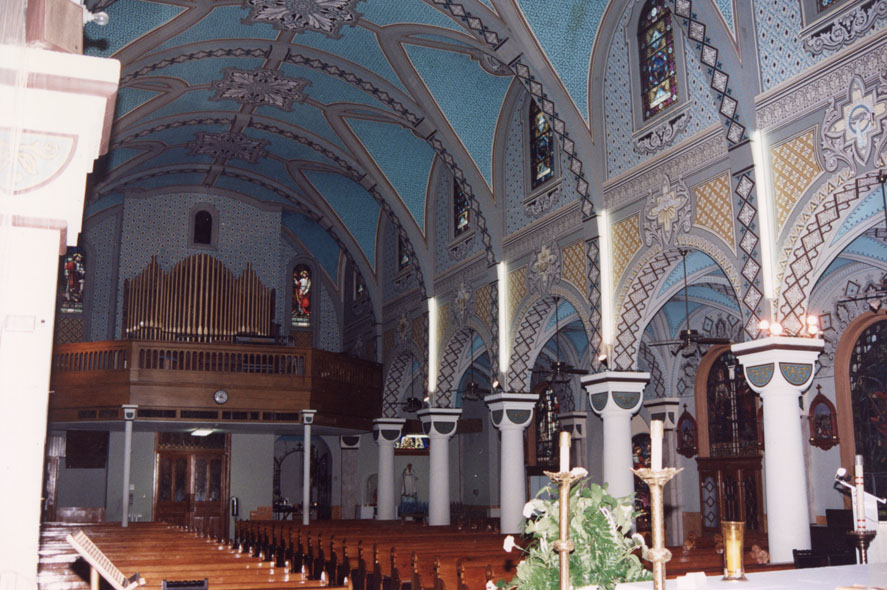In the early hours of June 30, 1991, a group of cursillistas in a building adjoining Immaculate Heart of Mary Church in San Antonio awoke to the sound of breaking glass. An arsonist who had been targeting houses of worship across the city had broken in and set fire to the sacristy. While firefighters were able to arrive at the scene and douse the flames before too much structural damage had taken place, the fire destroyed a large part of the intricately painted walls that were being restored. “Father Domingo’s masterpiece was ruined,” read the parish bulletin after the fire. “But we shall not brood in the ashes. Together we shall restore our church to its former beauty. This we promise and this we commit to ourselves.”
In 1987, Father Alberto Domingo, CMF, who had studied art in Spain, worked to restore the ornately painted interior which had begun deteriorating due to age. He earned the nickname “The Michelangelo of San Antonio” for lying on his back on the scaffolding while painting the ceiling, much like Michelangelo when he painted the Sistine Chapel. About his restoration work he said: “I don’t brag about it, it’s filled with mistakes. I tell you, I am not doing a work of art. It’s a work of love from the good Lord to the people. In reality, it’s just prayer.” Father Domingo was transferred to Los Angeles in 1989 and laborers were hired to finish the parts he could not before he departed for his new assignment. They had nearly completed the work when the arson occurred.
The original artist and time at which the church had been painted had been lost to time until recently. While Immaculate Heart of Mary Church was built in 1912 by Mr. Leo M. J. Dielmann, an architect who designed many churches around Texas, the interior did not receive its intricate decoration until 1944. A close reading of the parish’s chronicle revealed that a Mexican artist from Los Angeles by the name of Bartola was contracted in January of 1944 to decorate the inside of the church. Using stencils to intricately pattern the walls, he was able to finish the adornments in May of the same year.

Back in 1991, the restoration had to begin anew. For the first month after the fire, Mass was celebrated in the parish hall while the worst of the damage was cleaned up. Where the patterns were visible under the soot stains, the laborers put paintbrush to wall and restored by hand with no stencil to guide them. A local restoration specialist was contracted to reconstruct the patterns where the fire had blackened the walls. And after years of painstaking work, the restoration was finally completed in 1994. Serendipitously, the parishioners were able to celebrate the rebirth of the church’s interior on Easter Sunday.
In the thirty years since, the ornate walls of Immaculate Heart of Mary Church have continued to serve as the backdrop to a resilient community on the southwest edge of downtown San Antonio.


